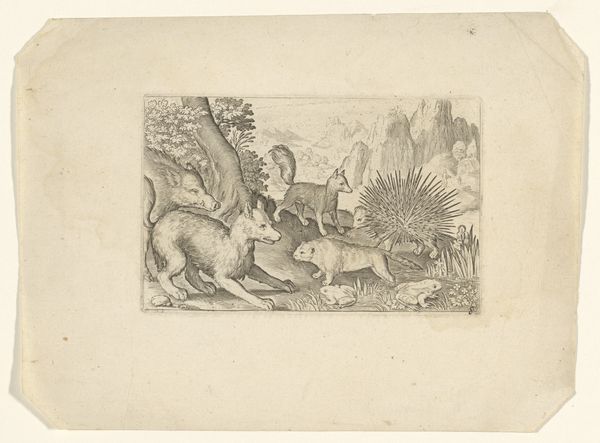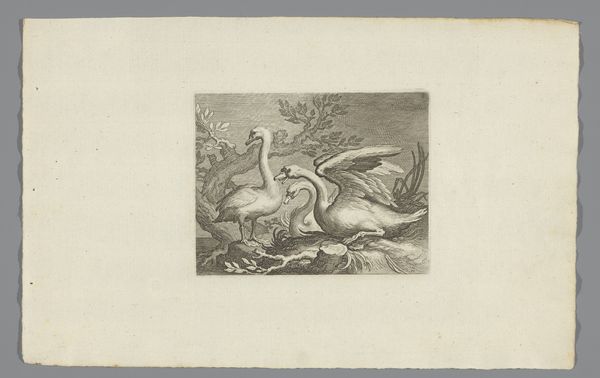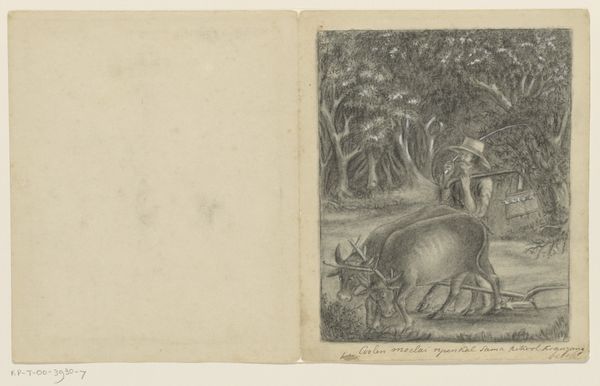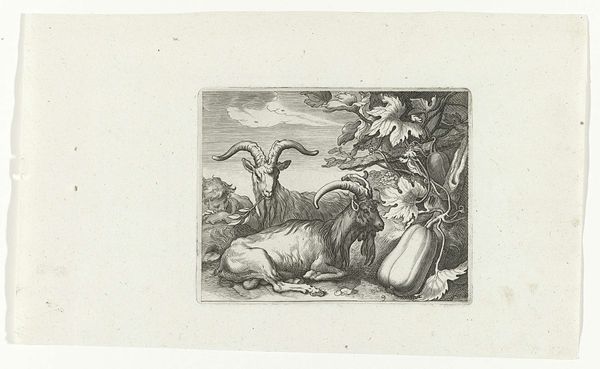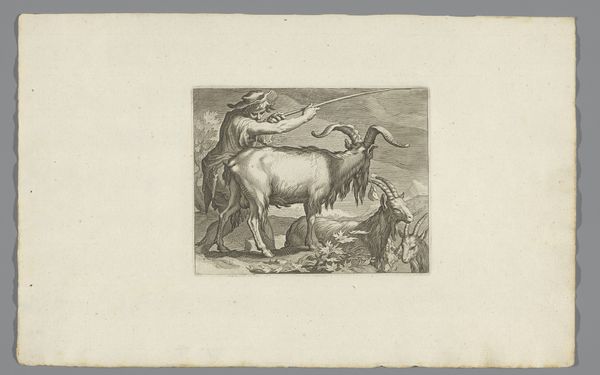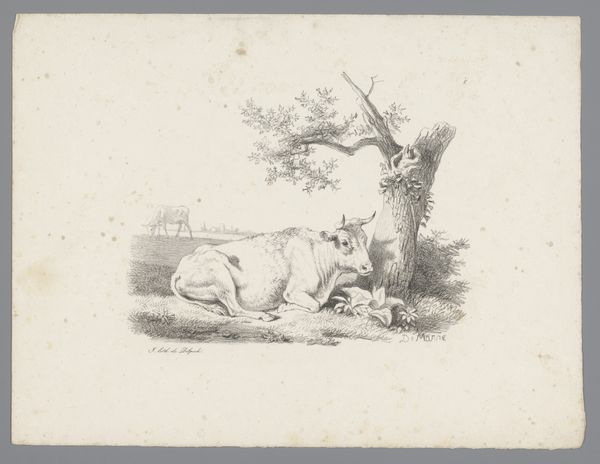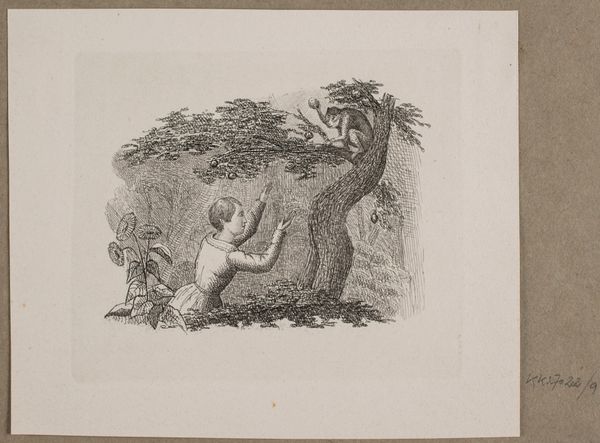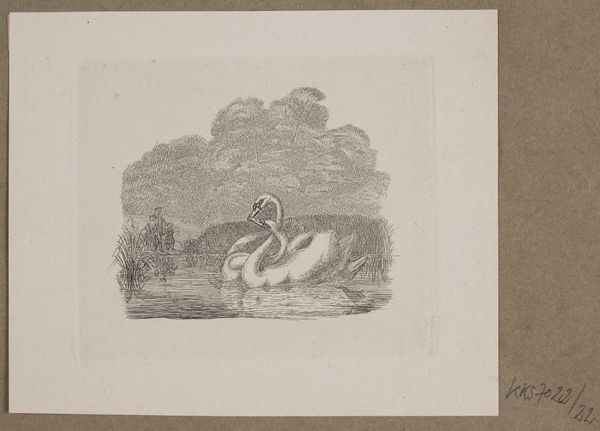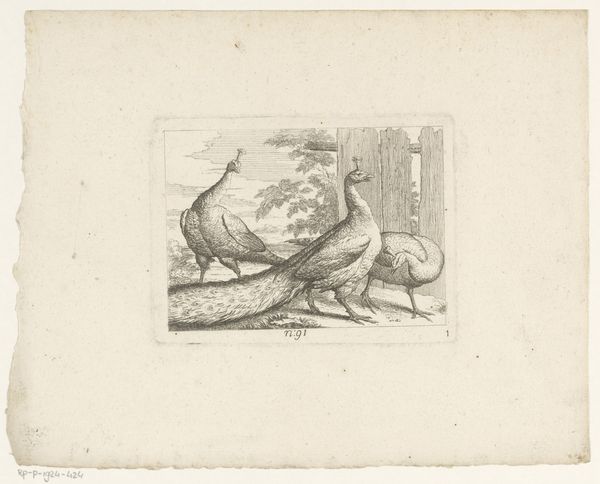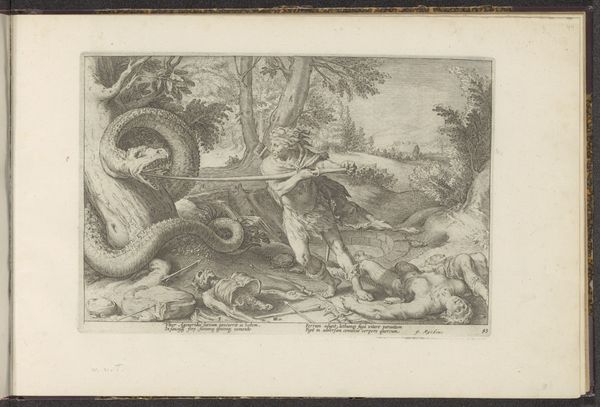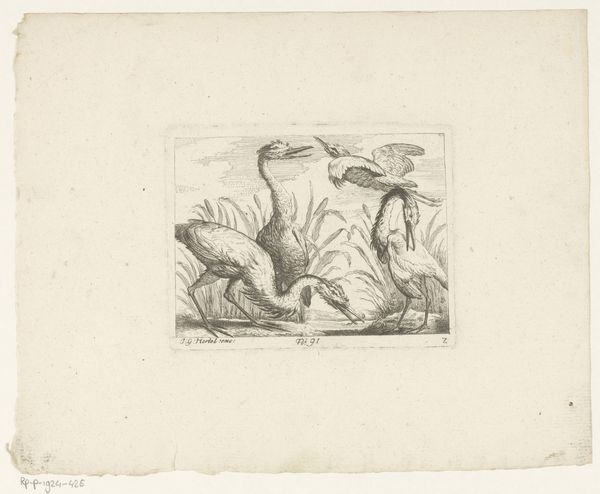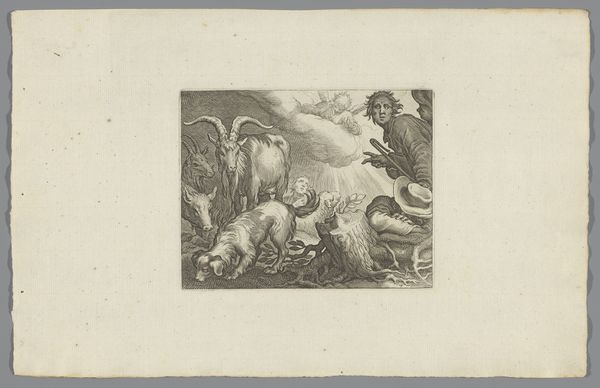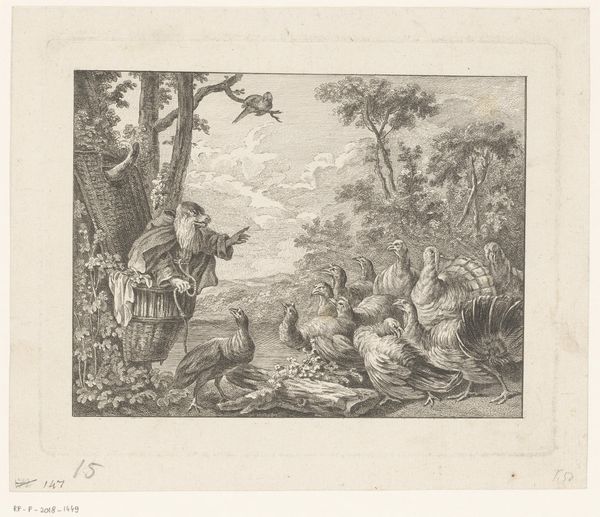
print, engraving
#
animal
#
dutch-golden-age
# print
#
landscape
#
engraving
#
realism
Dimensions: height 112 mm, width 142 mm
Copyright: Rijks Museum: Open Domain
Boëtius Adamsz. Bolswert created this engraving called ‘Goats and Pumpkin’ sometime in the 17th century. At this time, the Dutch Republic was a world leader in maritime trade and a center of artistic production. Bolswert, as an engraver, was part of a complex print industry that served both local and international markets. The rise of the Dutch Republic and its place in global trade is inseparable from the history of early modern capitalism. We can think of this image as a piece of visual propaganda for an emerging economic system. Note that there are two goats: one lying down, another standing tall. Goats were a valued commodity, and rural scenes like this would have been reassuring to city dwellers whose wealth derived from international commerce. With its fine lines and realistic depictions of the animals and vegetation, the engraving suggests a natural world ripe for economic exploitation. As historians, we must consider the social context in which an artwork was made. By consulting historical sources such as trade records and economic treatises, we can begin to understand the complex relationship between art and society in the Dutch Golden Age.
Comments
No comments
Be the first to comment and join the conversation on the ultimate creative platform.
